

| KEEPING WATER CHARGES LOW |
People in Hong Kong pay less for high quality fresh water than their counterparts in most major cities around the world. The water charges have not been changed since February 1995.
|
SCALE OF CHARGES
Fresh water for domestic use (other than flushing) is charged per four-month period at rates set out in a four-tier system as follows.
∗ One unit = one cubic metre |
Fresh water for other uses is charged at other rates as follows according to the purposes of consumption.
Sea water for flushing is supplied free of charge. |
In line with the Government's general policy to review fees and charges periodically, the Waterworks Accounts Committee, chaired by the Permanent Secretary for Financial Services and the Treasury (Treasury), reviews the Waterworks Operating Accounts annually. The review covers both the water tariff structure and the charging level, taking into consideration a number of factors including the financial performance of waterworks operations, public acceptance and affordability, views of Legislative Council members and any other policy objectives to be pursued. Any proposal for a change of the water tariff structure and/or charging level must be taken to the Executive Council and, if approved, to the Legislative Council to go through the legislative process.
Other than water charges, there are 25 statutory fees items stipulated in the Waterworks Regulations (Cap. 102A). We have been periodically reviewing these fee items in accordance with the Government-wide “user pays” principle which aims at recovering the full cost of providing the services. During the year, 24 statutory fee items have been revised effective from 1 August 2012. With approval by the Legislative Council, these statutory fee items will be further revised effective from 1 December 2013.
| PROFILES OF THE REVENUE FROM WATER CHARGES |
During the year 2012-13, some 14 percent of domestic customers were not required to pay water charges, 41 percent were paying up to the tier 2 rate of $4.16 per unit, 21 percent were paying up to the tier 3 rate of $6.45 per unit and only 24 percent were paying up to the tier 4 rate of $9.05 per unit. For the 2.5 million domestic customers, the average water charge in 2012-13, including those not required to pay any charge, was $47 per month. This was equal to about 0.3 percent of the average monthly household expenditure. |
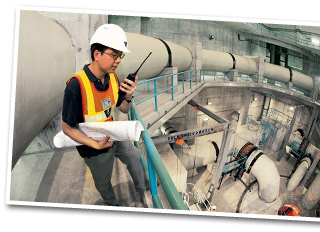

|
An analysis of the water charges by sectors over the past five years is as follows.
|
|||||||||||||||||||||||||||||||||||||
|
|||||||||||||||||||||||||||||||||||||
|
# including fresh water for flushing
|
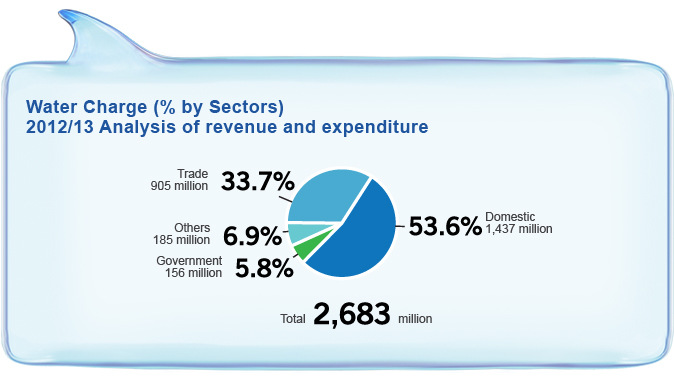
| ANALYSIS OF REVENUE AND EXPENDITURE |
The revenue collections include chargeable water supplies, fees, licences, and reimbursable work. In preparing the Waterworks Operating Accounts which present the financial results and positions on an accrual accounts basis, the revenue includes non-cash items, mainly contribution from rates, contribution from free allowance, and water supplies for government uses. The total operating costs include mainly staff cost, purchase cost of Dongjiang water, depreciation, operating, administration and other expenses. An analysis of the revenue and expenditure over the past five years is as follows.
|
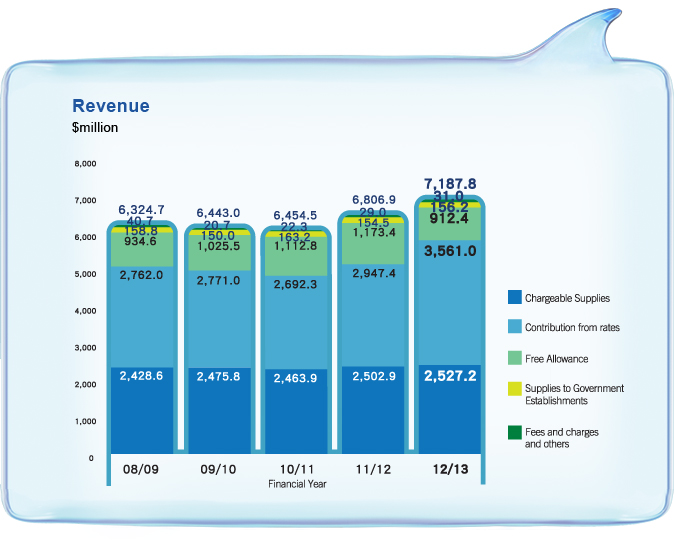
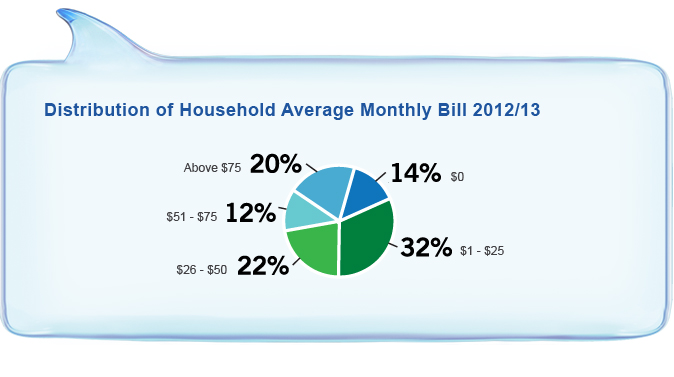
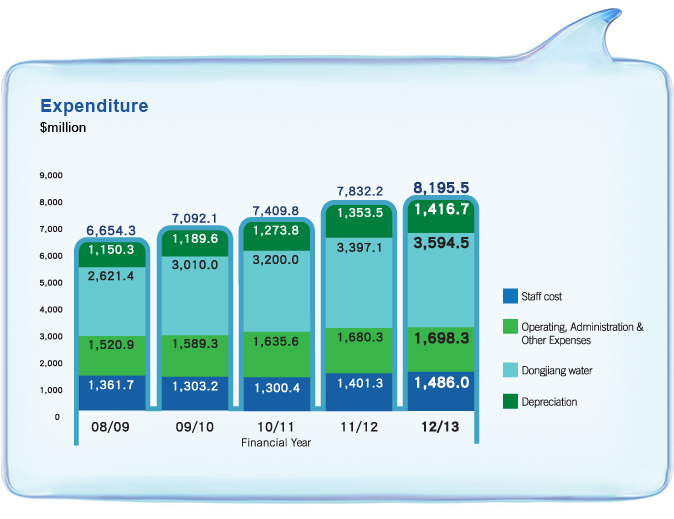
The Department is committed to providing services as cost effectively as possible. We have made substantial investment in fixed assets, equipment, information technology and human resources to improve the operating efficiency and staff productivity, and to meet the demand for higher quality of services by the public. Our customers and the public at large can be rest assured that we will exercise strict financial discipline and we will be cost conscientious in delivering our quality service to meet the demand of customers, a target which is our vision and accorded the first priority among our missions.
|

